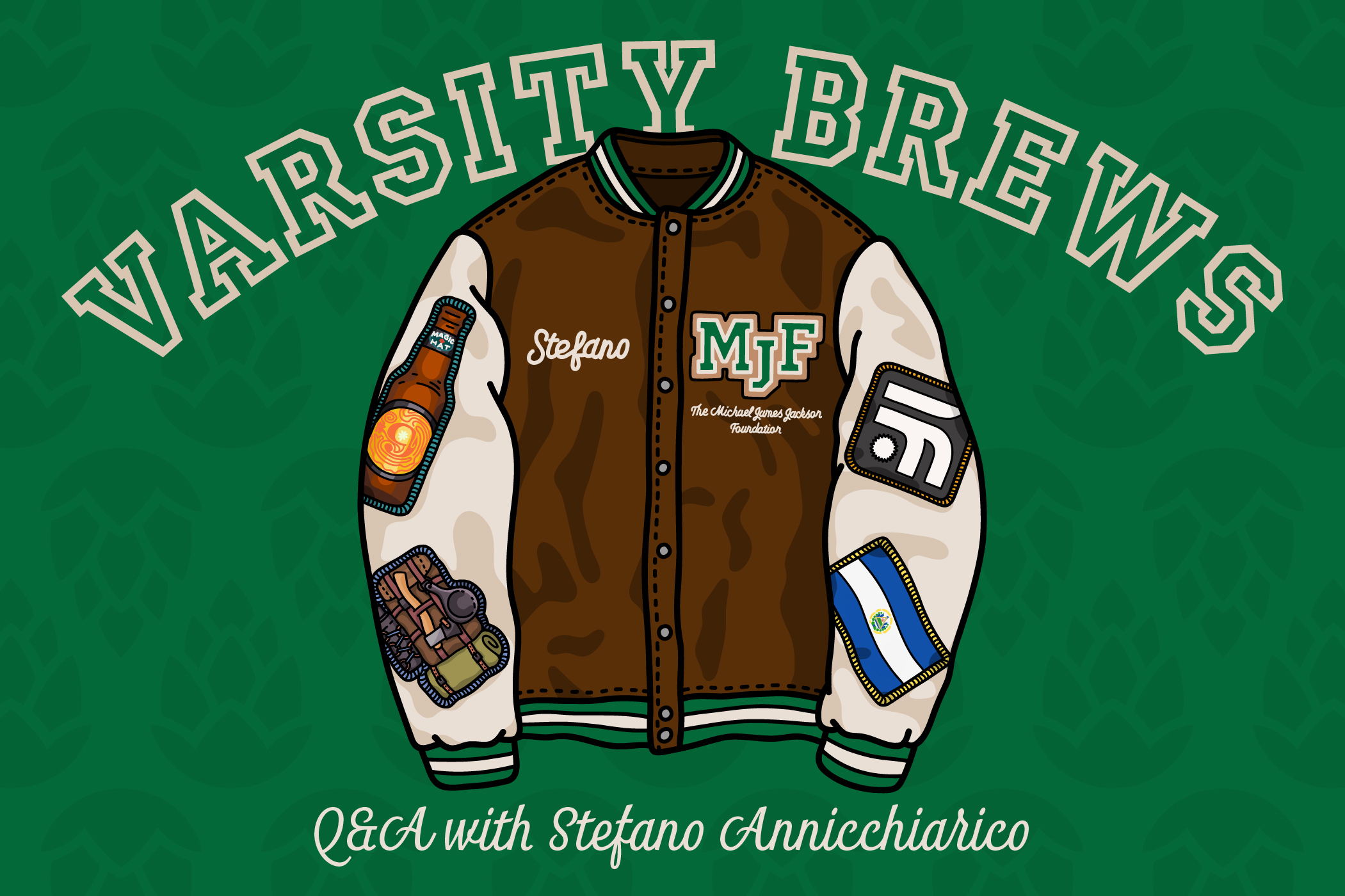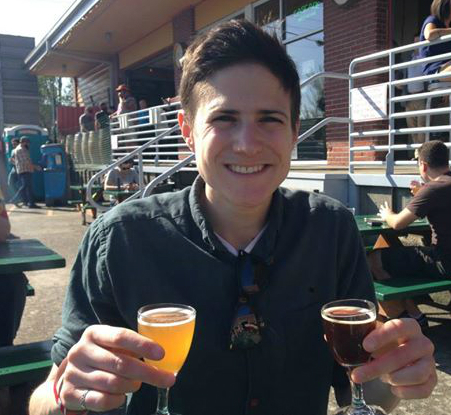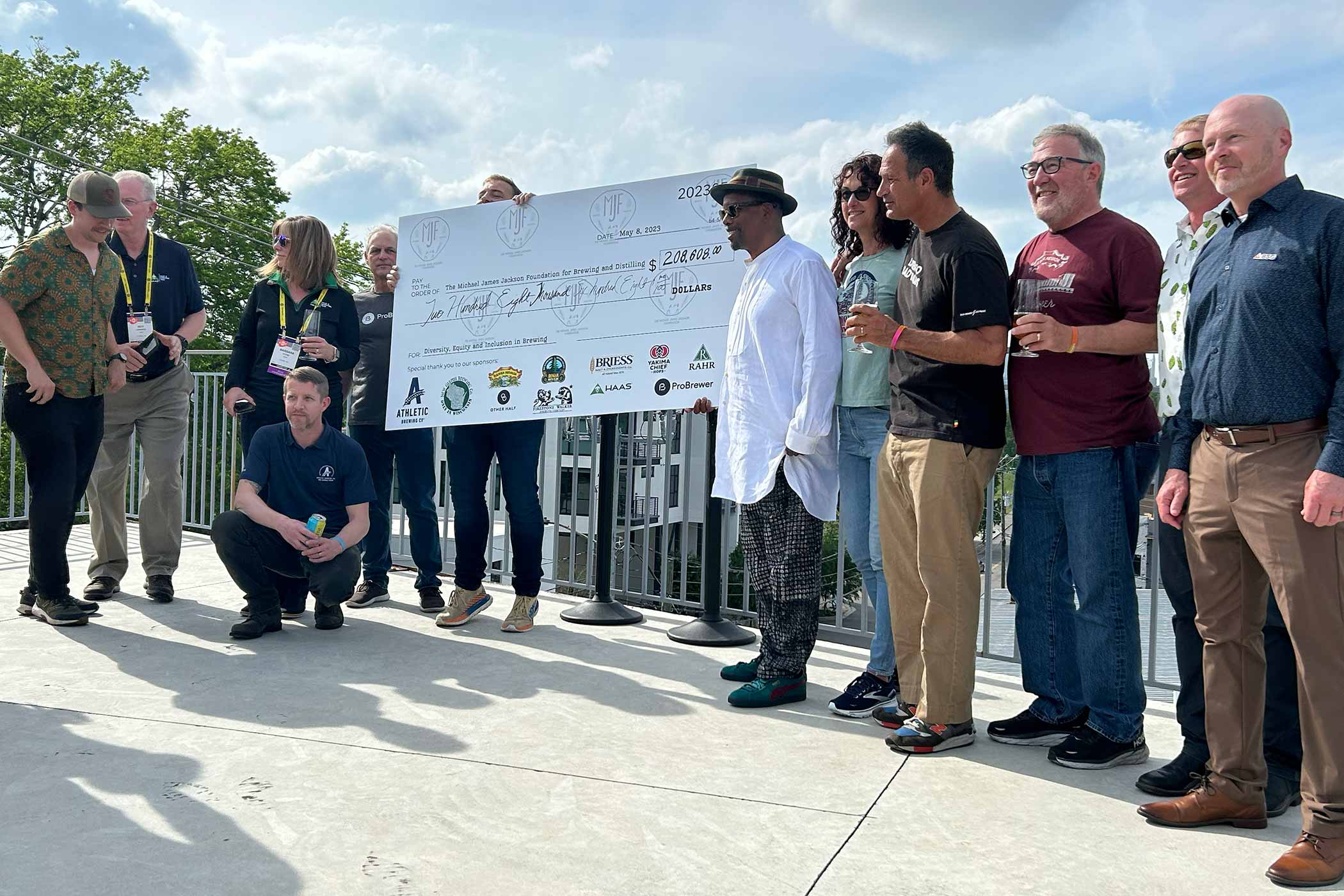Shop
Varsity Brews: 16 Questions With Stefano Annicchiarico
Hitting home runs.
Like This, Read That
Two months ago, we introduced an entirely new series called Varsity Brews. With each bi-monthly piece, we’ll profile a different scholarship awardee from the Michael James Jackson Foundation for Brewing & Distilling (MJF).
Remind Me, What Is the MJF?
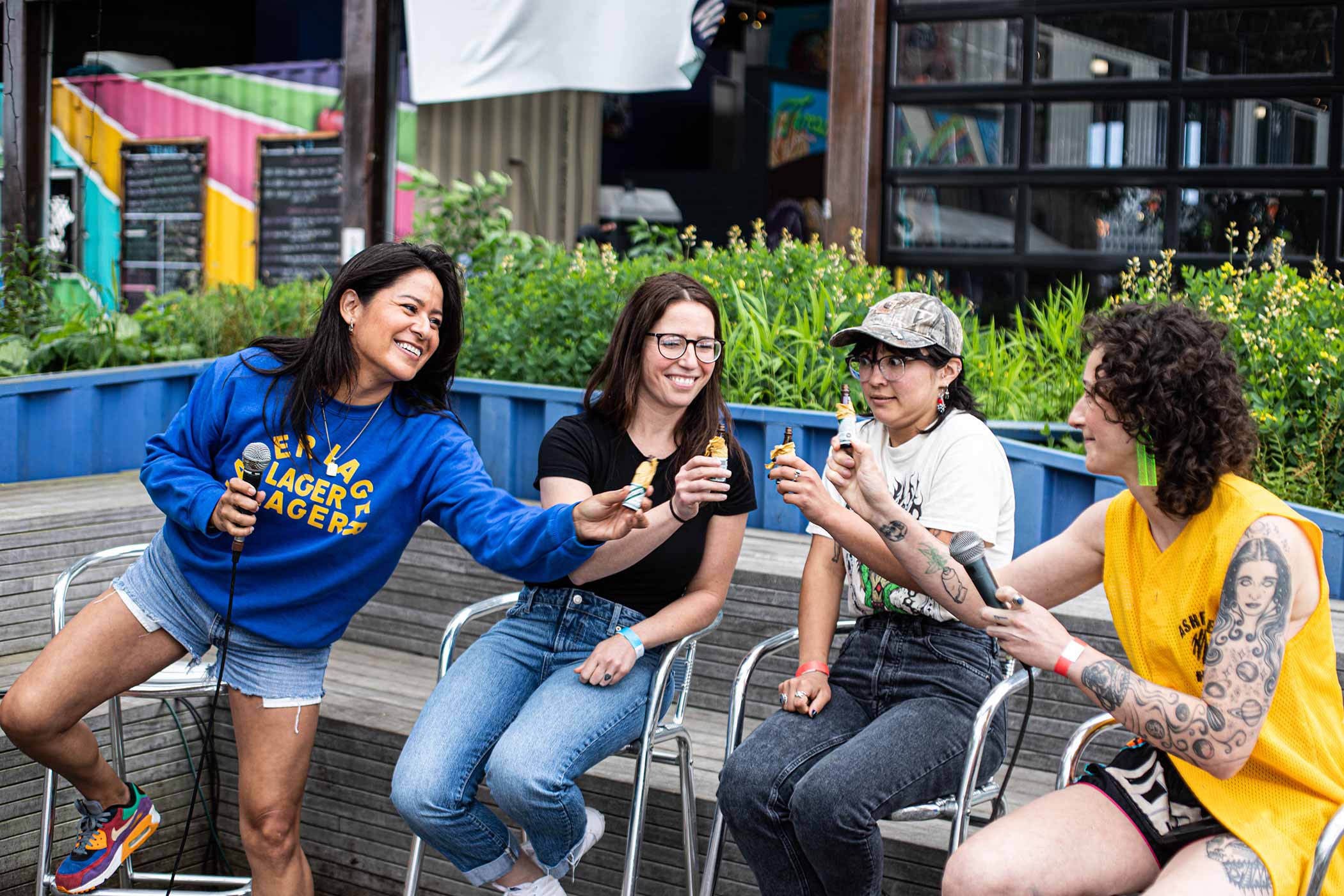
Scenes from Log Jammin’ III in 2023 with the MJF Director of Operations Breeze Galindo on the left | Photography courtesy of Jose Manchola (@yankeerunner77)
Named after Michael James Jackson, one of the world’s most incredible beer and whiskey writers, the foundation strives to make the craft beer industry more diverse, just, and equitable by providing scholarship opportunities to underrepresented communities.
“Michael Jackson pushed me into rooms where people were not prepared to see me and used the fact he was a god to whom no one could say no,” MJF Founder and thirty-year Brooklyn Brewery Brewmaster Garrett Oliver has told Hop Culture. “Who is he, and what is he doing here? That is what I heard in England while judging the Champion of Beer of Britain final panel in 1992. … If you’re a Person of Color, you have heard that whispered or felt that from behind a bar.”
The MJF aims to rewrite that narrative, equipping People of Color in the industry with the tools and education to advance in this industry despite its systemic barriers.
Since starting the foundation in 2020, Oliver and the MJF have provided funding for scholarships for fifty different People of Color in the industry.
These are educational opportunities that often come with a tremendous cost.
“What does a certificate cost? Four thousand dollars? Twelve thousand dollars? Twenty-three thousand dollars? Thirty-three thousand dollars?” remarked Oliver, admitting that even when he sat in the brewmaster chair, he required any new applicant to either have two to three years of experience or a certificate. “I thought I was doing the right thing, but it turned out that no Brown people ever showed up.”
A scholarship from the MJF covers those expenses and helps ensure that Black and Brown people can attend those interviews or even further their established businesses.
“If you don’t know how meaningful that is, ask them; ask me,” said Oliver. “I wished to god there was someone there for us. We have their back. And that’s important. You have their back. This is a beautiful thing.”
So, we took Oliver’s advice.
Introducing Fast Fashion Head Brewer Stefano Annicchiarico
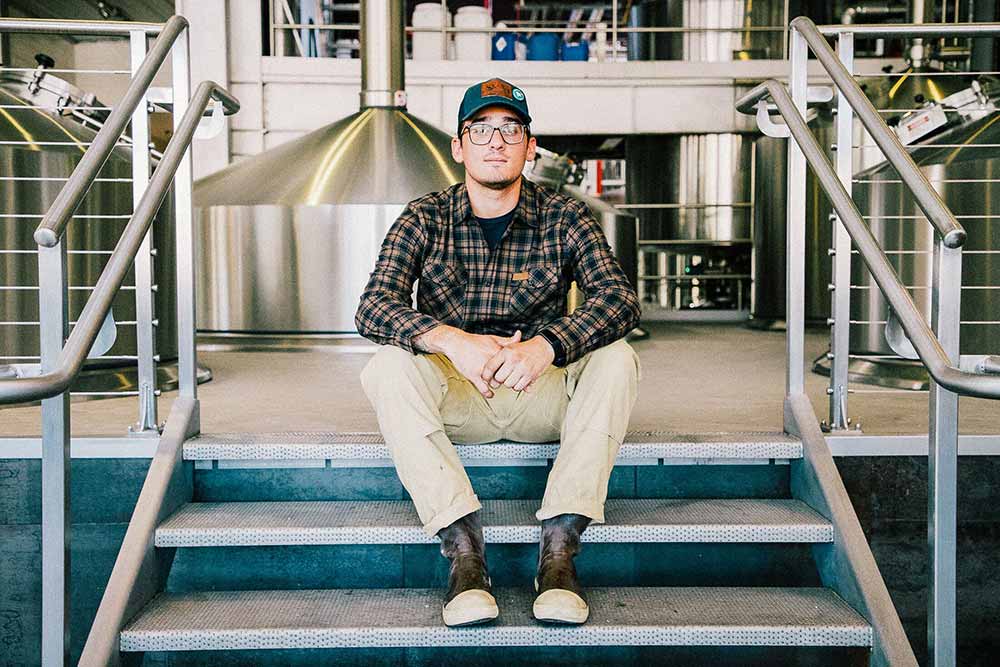
Photography courtesy of Firestone Walker
Originally from El Salvador, Annicchiarico moved to South Florida in 2001 at eight years old. Almost a decade later, he discovered brewing.
While in college at FIU, Annicchiarico started homebrewing, making friends with the professor who taught a brewing class in the university’s Chaplin School of Hospitality & Tourism Management.
The catch?
Annicchiarico never even took the class. The professor just “let me come to the lab and use the equipment whenever I wanted,” he says with a smile.
It’s truly the people whom Annicchiarico has met along the way that have helped his career move up, up, and up.
Well, actually, the summer before his senior year, Annicchiarcio went down—back to El Salvador for an internship at the country’s national brewery, La Constancia.
“It means beehive,” says Annicchiarico. “Just like community.” A word that Annicchiarico thinks fits the craft beer industry perfectly, and something he immediately fell in love with.
By the time Annicchiarico, who worked almost every position in the brewery for a few months, got back to FIU, he realized he didn’t want to follow his current path.
Instead of moving forward with his finance degree, Annicchiarico finally took those brewing classes, enrolling at Siebel in Chicago.
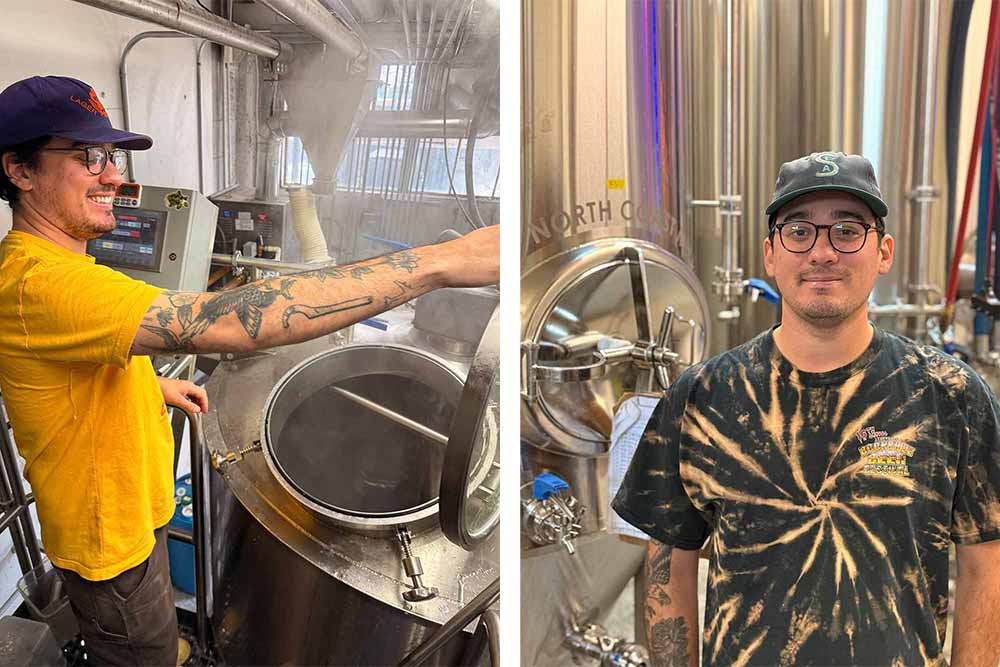
Photography courtesy of Fast Fashion
After graduating, Annicchiarico started stacking up an impressive resume, with stints at Firestone Walker, Moonlight, Fremont, and finally Fast Fashion, where he’s been the head brewer for the last two years.
But while Annicchiarico stacked the accolades, he realized he missed something.
“Since the beginning, the majority of people I’ve worked with have been white,” he explains, noting that moving from El Salvador and growing up and going to college in South Florida meant he had a pretty strong Latino community. “For the last eight years, I’ve just been head down working and learning. Now, I’m in a position that allows me the freedom to travel, meet people, and create new connections.”
Which is his favorite part of the industry, “the community around it,” he says.
Recently named to the MJF’s new cohort of scholarship recipientss, Annicchiarico is a recipient of the Sir Geoff Palmer Scholarship for Brewing, which will cover the cost for him to attend the Master Brewers Association’s Brewery Maintenance System course.
Annicchiarico is excited for the education, but perhaps even more grateful for the connections he hopes to make.
“The MJF is upping that to another level,” he says. “It’s a really cool new outlook on chatting with people throughout the industry.”
He adds, “It’s easy to be in this industry and just say I’m here to … collect a paycheck, but the MJF is a good opportunity to show people this industry is more than just a job.”
We sat down with Annicchiarico to talk about his shocking first day at Siebel, 3 a.m. shifts at Firestone Walker, never brewing the same beer twice at Fast Fashion, and what it’s really like to make beer within the shadow of the Mariners’ stadium.
16 Questions with Stefano Annicchiarico, 2025 Recipient of the Sir Geoff Palmer Scholarship for Brewing at the MJF
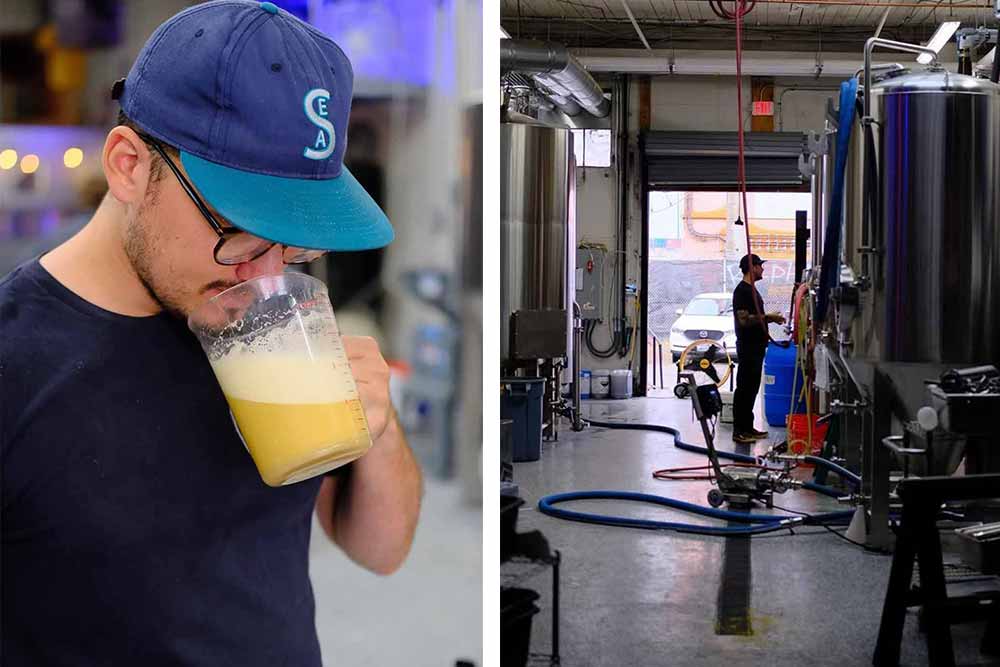
Photography courtesy of Beak Brewery
Grace Lee-Weitz: How did you first discover beer?
Stefano Annicchiarico: I started home brewing in college at FIU in Miami, which had a brewing class in its School of Hospitality. I didn’t take the class, but I became friends with the professor. He would actually just let me come to the lab and use the equipment whenever I wanted. He recommended that I check out Siebel.
GLW: Nice, so you ended up going to Siebel in Chicago?
SA: The next summer, I did Siebel’s online program while working at a brewery in El Salvador, La Constancia. It’s like the national brewery of the country that started in the early 1900s and only makes four lagers. It means beehive or just like a community [in Spanish]. My cousin worked in their marketing department at the time, so she got me a little internship.
GLW: What did you do for them?
SA: I just bounced around the whole brewery between the brew house, lab, filter area, and packaging.
GLW: And your family’s from El Salvador, right?
SA: I was born there, and my mom still lives there. It’s a beautiful country, but I moved to Florida in 2001 when I was eight years old.
GLW: It’s fun that you started homebrewing and had the opportunity to use a lab in college to explore that passion a little more. Were you just drinking your own homebrew at the time, or do you remember the first craft beer you tried?
SA: I don’t know if it’s considered craft anymore, but it was Magic Hat #9. Are they even still around?
GLW: I’m not sure! I think I actually read a story recently that tried to explain what happened to Magic Hat #9. But regardless, it was definitely considered craft at the time.
SA: I also drank Smuttynose, and obviously Dogfish, but then Sculpin started to make its way to Florida. I would go to Total Wine and ask the manager, ‘Hey, can you text me when the Sculpin beer shows up?’ It would come in two months old, but I remember still being like, wow, this is cool!
GLW: Oh, I remember when I tried Habanero Sculpin for the first time. I was at this taco spot in Chicago, and it blew me away, literally. Eventually, you had an opportunity not to work for Ballast Point but for another prominent California brewery, right?
SA: I got lucky that one of the other students at Siebel planned to work for Firestone, so he recommended me for the job. Three weeks later, I moved out to California.
GLW: What did you do at Firestone?
SA: You start in the cellar and work your way into the brewhouse, and the last thing you learn is filter management. I did four years there. It’s a twenty-four-hour facility, so you get to see a lot and work a lot of different shifts.
GLW: I imagine you’ve probably seen some things.
SA: Being there at three in the morning with only five other guys in the whole building is strange. Firestone is a wild place!
GLW: Sure is. I’ve been to Firestone a few times, but I’ll say, I’ve never been there at three in the morning. From a huge twenty-four-hour operation, you went somewhere much smaller next.
SA: I wanted something more hands-on with more decision-making. Firestone is huge, but at Moonlight, there were five of us making three thousand barrels [a year]. I knew if I wanted to be in this industry for a while, I would have to work at a place like that because the likelihood of being at a large brewery for the rest of my career was small.
I loved working there; it was a lot of fun. I spent two years there and learned a lot from Zach [Greenwood], the head brewer. I think he’s one of the best brewers in the country.
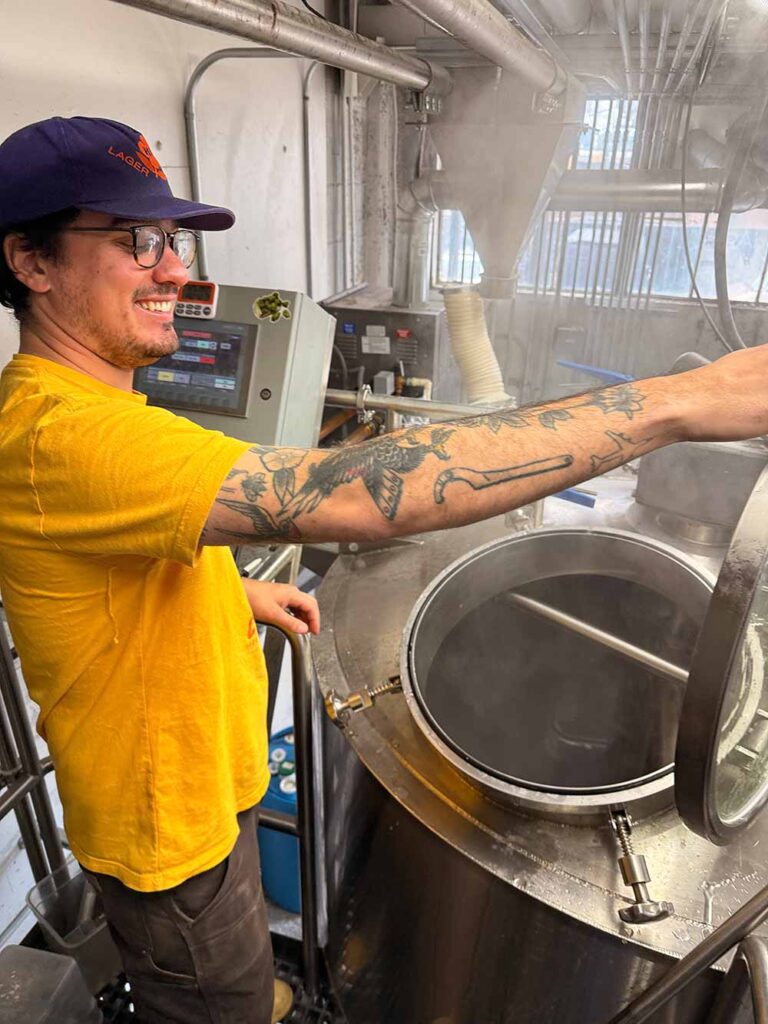
Photography courtesy of Fast Fashion
GLW: Moonlight makes some of my favorite beers, whether it’s Death and Taxes, Reality Czech, or something else. It sounds like your connection to Moonlight followed you even after you moved to Seattle to work at Fremont and eventually Fast Fashion.
SA: I worked at Fremont for ten months before I met Fast Fashion Owner Matt Storm at one of his restaurants, The Masonry. He’s a big Moonlight fan. They had sent me a case. I gave some to the bar manager, and it made its way to Matt. We started chatting and became friends. He was like, Hey dude, I’m looking for a head brewer. Would you be interested?
GLW: You’ve been there for two years now, so what have been some of your proudest moments?
SA: I’ll have brewers from around the city, but also people visiting in town, saying they stopped by the brewery before a ball game and just try a bunch of beers and love all of them. I think it doesn’t get old to hear people say that.
Up until recently, it was just me in the brewer house in the production space, so every beer was all me for the last year and a half.
GLW: And what kind of beers are you making at Fast Fashion?
SA: When you think of “fast fashion,” you think of cheap clothing. But obviously, the beer is not cheap here. We actually use really high-end quality ingredients. But just like fast fashion that’s meant to be worn now, we’re a hop-focused brewery, so we ask people to drink the beer fresh.
For the most part, we don’t make the same beer twice. We’ve made upwards of two hundred beers in the last four years. So a lot of times we’ll make a beer and we’ll never release it again. Then it’s on to the next. People can expect to come here and try something unique every time they come; the board is never the same.
GLW: Looking back, you’ve really traveled around and worked at some great breweries across the industry. What has your experience been like as a Latino brewer?
SA: Since the beginning, the majority of people I’ve worked with have been white. But growing up in South Florida, my graduating class in high school was 750 people, maybe ten people were white. Then I went to FIU, which is a predominantly Latino college.
I remember the first day of Siebel, I sat there, and I thought this was the largest amount of white people I had ever been around in a classroom. It was super funny!
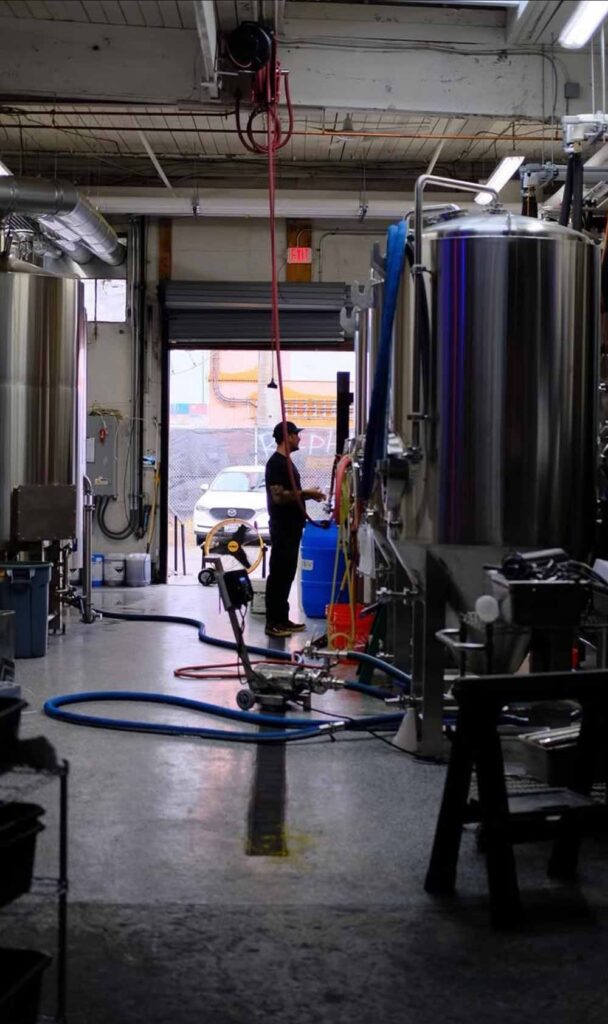
Photography courtesy of Beak Brewery
GLW: How did you learn about the MJF?
SA: When the MJF started, I was looking from the outside in, just because I’ve been very lucky in my brewing career. I’ve gotten the jobs that I wanted. I was able to attend Siebel early on. And I had everything I needed at the time, and then that’s when I met Breeze, and we started chatting. She was like, dude, just because you’ve been lucky and made connections doesn’t mean you shouldn’t apply for this. This is meant for us.
GLW: What was your first thought when you found out you had just become an MJF scholar?
SA: I didn’t think I was going to get it, to be honest! But the next thing I knew, I got an email from Garrett [Oliver] saying he was thrilled [to tell me I’d been accepted]. It was awesome.
I’ve kept my head down for so long in this industry, just working, that I’ve never sought recognition for anything. But to get an email from Garrett, it was a very cool feeling.
GLW: You mentioned that, for a while, you just kept your head down, not really getting an opportunity to connect with other BIPOC folks in the industry. How has that perspective changed since you learned about MJF?
SA: Community is the best part of the industry. I’m finally at a place where I still work a lot, but I now have the freedom to travel, meet people, and create new connections. MJF is upping that to another level. I have a new outlook on chatting with people throughout the industry.
GLW: So your scholarship is to the MBAA Brewery Maintenance program. What are you most excited about with this course?
SA: I was just looking at the syllabus today. This course actually dives into how everything’s built and how to maintain it properly, which will be a lot of fun. And a lot of things you don’t learn unless either … something breaks and you have to figure out how to fix it yourself or you have to call somebody in and then say, hey, this is broken. Can you fix it? So it’ll be cool to just see day-to-day problems that breweries face.
And without MJF, I wouldn’t have been able to afford it. And Fast Fashion being a small brewery, I wouldn’t have asked them to pay for it either.
GLW: What I’ve found in a lot of my conversations with folks from the MJF, especially current or past recipients, is a desire to pass it on or pay it forward. How do you hope to be an example for other folks who will follow in your footsteps?
SA: It’s easy to be in this industry and just say I’m only going to work, go home, and collect a paycheck. But by showing people what the MJF does, I think it really shows what the industry is all about—building community and collaboration.
It’s a good opportunity to show people this industry is more than just a job. It can be really fulfilling if you really get out there.
I’m just excited to be a part of the MJF, get out there, meet more people, and obviously, go back to school.

